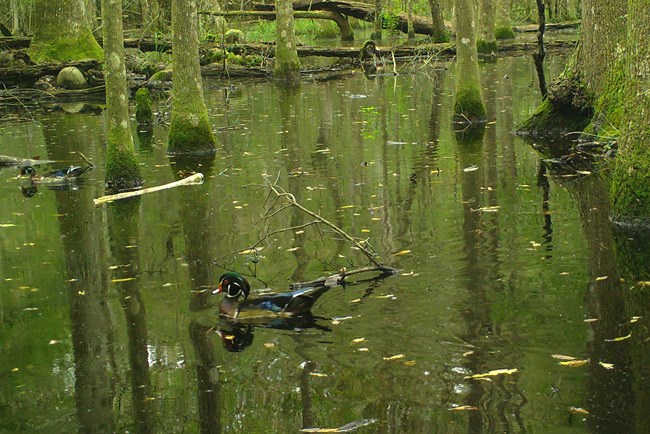
NPS Photo Aix sponsaWood ducks are some of the most easily identified ducks in North America because of their bright coloration. Males are more brightly patterned than females. They are often found near wetlands or water sources. They forage for food on the surface of the water or walking on land, unlike many ducks which forage for food beneath the water. They mainly eat vegetation such as berries or acorns but will also eat insects. Unlike most ducks, they have sharp claws that allow them to perch in trees. Ball, I. J., Gilmer, D. S., Cowardin, L. M., & Riechmann, J. H. (1975). Survival of wood duck and mallard broods in north-central Minnesota. The Journal of Wildlife Management, 776-780.
Clawson, R. L., Hartman, G. W., & Fredrickson, L. H. (1979). Dump nesting in a Missouri wood duck population. The Journal of Wildlife Management, 347-355. Dugger, K. M., & Fredrickson, L. H. (1992). 13.1. 6. Life history and habitat needs of the Wood Duck. Johnsgard, P. A. (1960). Hybridization in the Anatidae and its taxonomic implications. The Condor, 62(1), 25-33. |
Last updated: April 21, 2021
